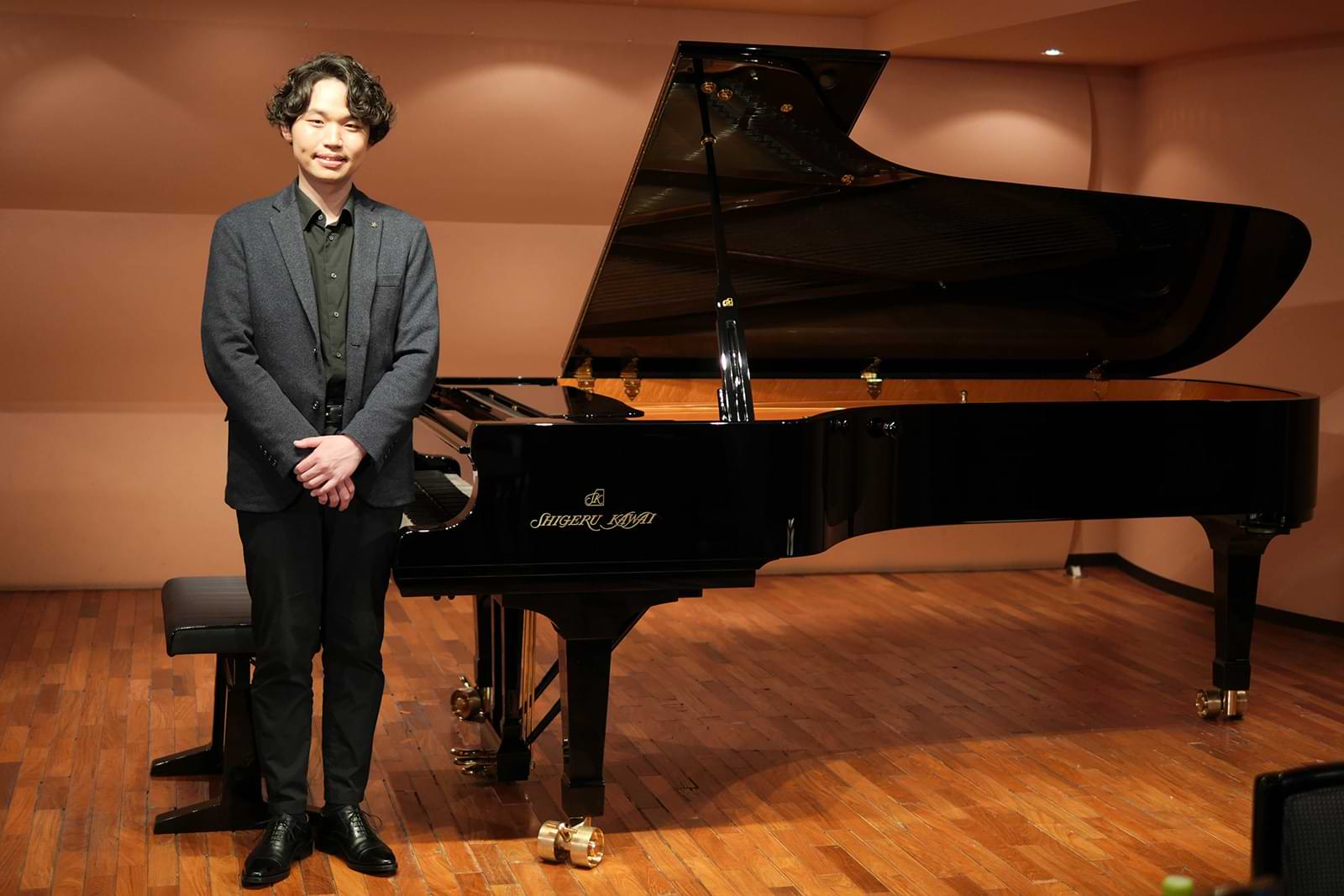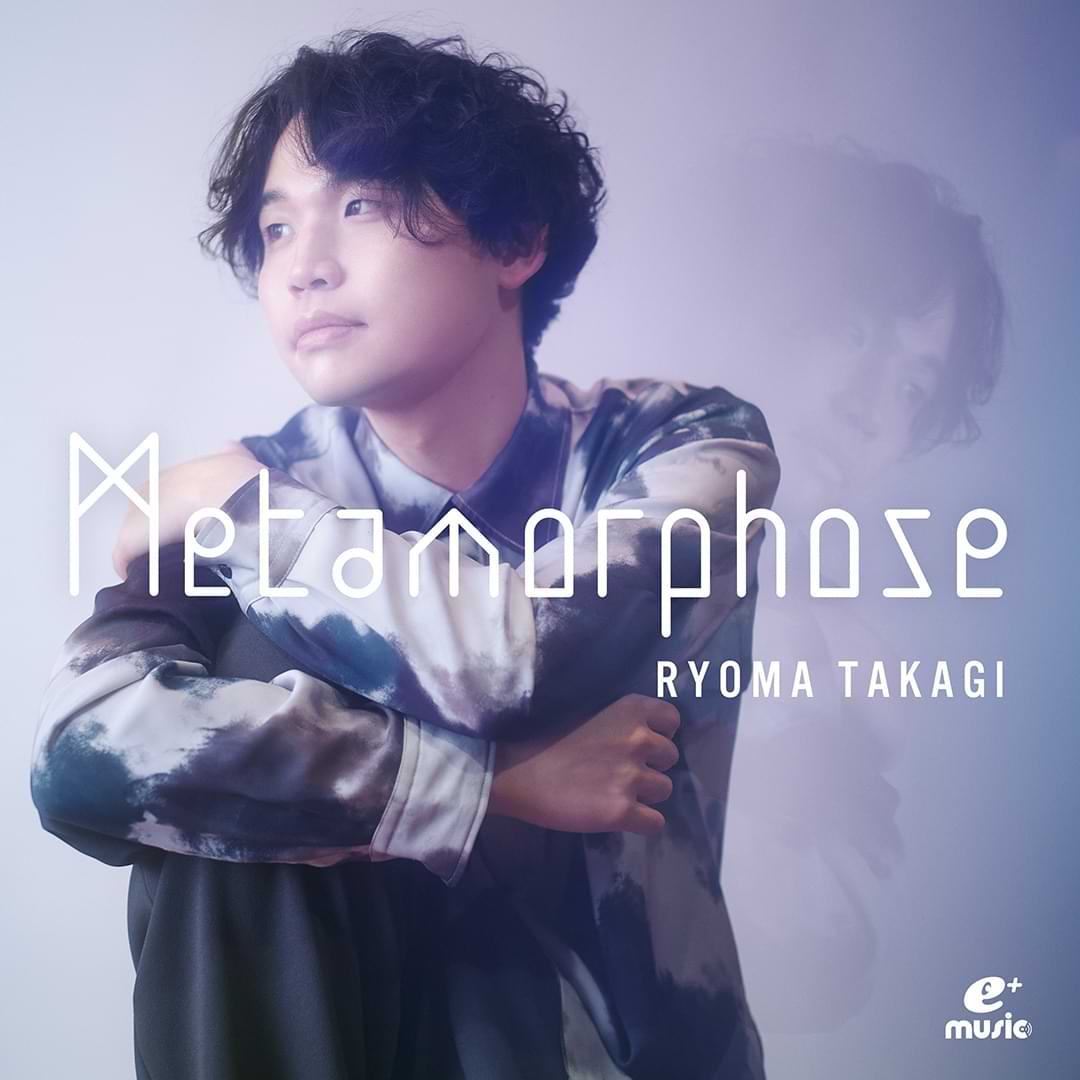NEWS
2024.07.02
Interview: Ryoma Takagi (Pianist)
Every memory is kept in a secret place deep in our hearts, and any of them can pop out of the drawers of our minds on a whim.
Interview / Text: Haruka Kosaka
Interview Translation: Midori Tamura, Shima Kobayashi and Andrew Melvin
The pianist Ryoma Takagi, best known for his work in the TV animation ‘Forest of Piano’ and ‘Ao no Orchestra’, is one of the most sought-after young pianists of his generation. Ryoma describes the sound of the Shigeru Kawai piano as fascinating, given that he used it when recording his debut album ‘Metamorphose’, which was first released in April 2024.
We caught up with him during his CD release tour to find out about his vision of what kind of pianist he would like to become.

―― I understand that you were born into a musical family and started playing the piano when you were two years old.
Yes, but I also loved playing football as a child and I used to spend a lot of time outdoors. Elena Ashkenazy, who I studied under from the age of seven, encouraged me to play football and other sports. This was because it is important to develop agility and maintain a healthy body in order to perform well. She also emphasised enriching one’s mind as a person, which is the most important aspect of being a performer in her view. In fact, I was told never to practise the piano for more than four hours a day!
―― Could you tell us what experiences, other than playing the piano, have helped nurture your rich imagination?
From a young age, I spent a lot of time daydreaming in my imaginary world and often made up stories. I loved reading and drawing and watching films too. Developing such an imaginative mind has been very useful for me both in performing and in teaching. Especially when it comes to teaching, there are times when I find it difficult to convey a message to the students if I just sit next to them and have them listen to my demonstration. In these instances, using these specific expressions help me to convey the message better, for example: ‘an angry forte, like being tossed around in a stormy sea’, or ‘pianissimo, just like moving forward step by step through a misty forest’. You see, I guess I was a bit of an eccentric child who imagined all sorts of stories on my way home every day, something I never thought would become useful today!
I think it is not enough for a musician to just do music. Exposure to the arts is of course a must, but all sorts of positive experiences, from good food to taking in the scenery on your travels and so on, are vital to be well-rounded as a person.
After all, I think every memory is kept in a secret place deep in our hearts, and any of them can pop out of the drawers of our minds on a whim.
―― With so many renowned performances having been made in the past, how do you find your own interpretation when working with a piece of music?
There is so much to learn from listening to recordings of the old masters, which I have always loved. Of course, there is no such thing as just simply imitating their performances. What is important is to give thought to why they play the way they do and what beliefs led them to arrive at that performance.
The foundation of my musicianship is based on the guidance of my teachers, such as Elena Ashkenazy, Hiroko Nakamura, Michael Krist and Boris Petrushansky. My own interpretations emerge from the mixture of various experiences and things I have learnt.
Recently, I went to a concert of Mr. Petrushansky which was so wonderful that I was moved to tears. It was as if Schumann had descended from heaven into his own ‘Davidsbündlertänze’, and I felt there was something otherworldly about it. I was reminded once again how fortunate I was to have been taught by such a wonderful performer.
Being able to see the world through sound is an ultimate form. A performance that takes you to extraordinary depths through this supernatural quality is my ideal kind of performance.
―― So, the piano must play a very important role as a creative partner. What is the definition of a good piano for you, Mr. Takagi?
It is a piano with rich overtones. For me, the ideal piano is one that has a full resonance, is never stiff, and has a core of sound, whilst being able to produce mellow notes as if it has a soft veil around it, both for intense notes and for delicate notes. The Shigeru Kawai piano is the best piano for me. It has a wonderful resonance, but never becoming overly rich and unpleasant. It has a great response which allows me to work with the timbre I want to produce, as long as I can manage my own physical demands.
The first time I played the Shigeru Kawai piano was at the Hamamatsu International Piano Academy Competition. Actually, I had played a different instrument in the qualifying round. But the Shigeru Kawai piano I heard as an audience member was just so wonderful that I asked to change instrument and I was allowed to play it for the final round.
This meant that I had to play the instrument without any previous practice on it, but the staff at Kawai kindly took me to the Ryuyo factory and told me that I could practise as much as I wanted on the same model. I was so thankful for their support.
The warmth and support of the staff and the technicians is the same as the warmth of the sound I find on this instrument, which I believe is precisely what makes Shigeru Kawai pianos so desirable.

―― Your debut album ‘Metamorphose’ (e-plus music) was also recorded on a Shigeru Kawai piano.
I have played many Shigeru Kawai pianos, but the piano I used for the recording was the most impressive piano I’ve ever played! I thought it was great to be able to record on such an instrument. As this is my debut album, I spent a lot of time selecting the pieces.
To showcase ’Ryoma Takagi’, I made sure to include my important repertoire from Rachmaninov, Tchaikovsky, Grieg, Debussy and Schumann. The order of the pieces was carefully chosen with particular attention to their tonality. This CD may seem randomly put together, but forms one coherent whole. It is a CD I put all my effort into.
―― What are your interests apart from performing?
One thing I would like to do is to promote the music of Bruckner, which I love, to people who don’t normally listen to it. As an example, for many of the people who come to my concert ‘Forest of Piano’, Bruckner is probably a rather unapproachable figure. The image of Bruckner may be that it is long and difficult, but in fact there are many magical moments.
Recently, I have been studying his scores more intensively, and am once again captivated by Bruckner’s music. One day I would like to feature a piano arrangement of Bruckner’s symphonic works in my concert programmes.
―― Going forward, what is your aspiration as a pianist living in today’s society?
There are many musicians playing in many different styles these days and I spend a lot of time thinking about what kind of pianist I aspire to be.
One thing I feel in particular is that I have inherited a lot from the pianists who have come before me. In this way, I feel the weight of the baton. Working within the discipline of the classical music tradition to which I belong, I feel I’m on a mission to ensure this is passed on to the next generation. Needless to say, it’s not so much a case of ‘please listen to Ryoma Takagi’. For me, what I would like the audience to enjoy is the sound world of the composers I perform. On this basis, I think about what connections I can make with my music to the next generation.
I hope my performances bring a touch of colour to the lives of the listeners sitting in front of me. At the same time, I have a vision for longer term goals. I shall remain mindful of what legacy I can leave for the world within the history of music, as well as what I can pass on to the next generation.
CD information
Ryoma Takagi – Metamorphose

Winner of the International Edvard Grieg Piano Competition Releases Highly Anticipated Debut Album!
Tracks Included
– S.Rachmaninoff : Morceaux de fantaisie, Prelude in C-sharp minor, Op.3 No.2
– S.Rachmaninoff – A.Eguchi : Rhapsody on a Thema of Paganini Op.43, 18th Variation
– P.I. Tchaikovsky :6 Pieces Op.19-6
– E. Grieg : Lyriske smastykker No.5 ”Notturno” Op.54-4
– E. Grieg : Lyriske smastykker No.8 ”Byllupsdag pa Troldhaugen” Op.65-6
– C. Debussy : Préludes 2 ”Canope”
– R. Schumann : Kinderszenen ”Traumerai” F-Dur Op.15-7
– R. Schumann : Carnaval, Op. 9
About Ryoma Takagi
Ryoma Takagi was brought to worldwide attention when he won First Prize and Audience Prize at the 16th Grieg International Piano Competition. Also, he won first prizes at other seven international competitions, including the 26th Roma International Piano Competition.
He performed at the exceptional venues such as Wiener Musikverein in Vienna, Wiener Konzerthaus in Vienna, Schonbrunn Palace in Vienna, Gasteig in Munich, the Kremlin in Moscow, Suntory Hall in Tokyo, and Festival Hall in Osaka. He works with outstanding orchestras in the world, including Oslo Philharmonic Orchestra, National Philharmonic of Ukraine, Vienna Chamber Orchestra, Bergen Philharmonic Orchestra, Tokyo Philharmonic Orchestra, Tokyo Symphony Orchestra, and New Japan Philharmonic.
He has shown his remarkable musicality in chamber music as he collaborates with prestigious artists such as Fumiaki Miura, Sergei Nakariakov, and Ray Chen. As an active pianist in demand, he appeared in the media and festivals in Japan.
Born in 1992 in Japan, he began his musical training at the age of two and studied with Elena Ashkenazy, Hiroko Nakamura, Boris Petrushansky, and Micael Krist. He gained his bachelor and master degree at the University of Music and Performing Arts Vienna and completed the Imola International Piano Academy with the Meister. He was appointed as the instructor of Kyoto City University of Arts in 2023.
Official website: https://ryomatakagi.com/

